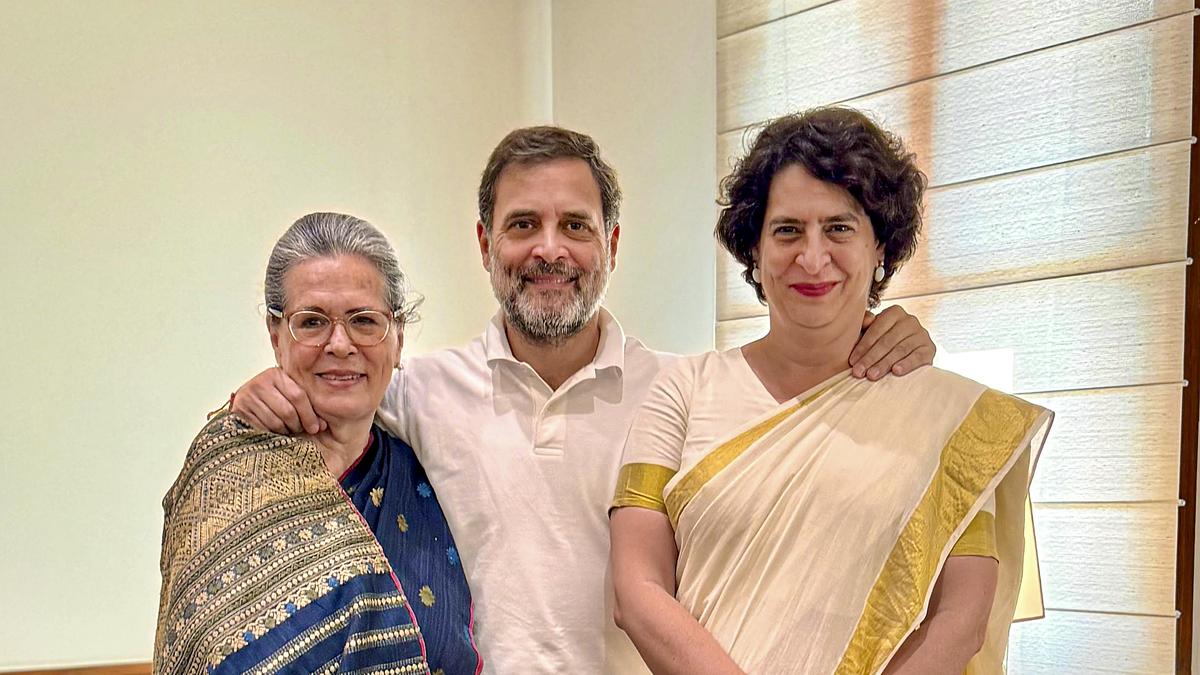 |
|
The article highlights the significant presence of family dynasties within India's parliament. The Nehru-Gandhi family, a prominent example, has had fourteen members serve as Members of Parliament (MPs) throughout history, with three currently holding seats. This includes Priyanka Gandhi Vadra, whose recent electoral win in the Wayanad constituency brings the current number of Nehru-Gandhi family members in Parliament to three. The longevity and influence of this family within Indian politics are undeniable, spanning generations and showcasing the enduring power of political legacies. Their influence extends beyond the number of seats held; it shapes the narrative and direction of the Congress party itself, reflecting a complex interplay between family ties and political power.
Beyond the Nehru-Gandhi family, the article reveals a broader pattern of familial representation within the Indian political landscape. The Yadav family, affiliated with the Samajwadi Party, currently holds the most seats among the families profiled, underlining the strength of their political network and influence. This demonstrates that the concentration of power within specific families isn't limited to a single political entity; it's a phenomenon observed across various parties and regions. The analysis suggests that political power in India isn't just about individual merit or electoral appeal; it also significantly reflects the ability of families to maintain and expand their political influence across generations.
Other prominent examples include the Chidambaram family within the Congress party, the DMK's Maran family, and the Scindia family from the BJP. These families demonstrate that the concentration of power within family units is a recurring theme in the Indian political system. The inclusion of various political parties in this familial representation underscores the systemic nature of this phenomenon, transcending party lines and regional boundaries. The analysis suggests a deeper examination of the role of family networks in consolidating political power and its potential implications for fair representation and democratic processes within the Indian political system.
The presence of multiple family members in Parliament raises crucial questions about the nature of Indian democracy. Does this familial concentration of power reflect a truly representative system, or does it suggest a certain degree of inherited privilege and limited opportunity for newcomers? The article indirectly highlights a debate over meritocracy versus dynastic succession in Indian politics. Further research is needed to assess the extent to which these family connections impact policy decisions, electoral outcomes, and overall governance. Such an investigation could involve analyzing the legislative activities of family members, comparing their electoral success rates with non-family candidates, and examining public perceptions of family-based political dynasties.
This examination of family representation in Indian Parliament prompts a wider discussion about the structure of Indian politics. The influence of family networks may lead to a concentration of power and resources, potentially hindering the emergence of new political voices and perspectives. This could ultimately affect the dynamism and responsiveness of the political system, leading to an inequitable distribution of power and potentially limiting the breadth of viewpoints represented within the parliamentary structure. The article provides a snapshot of a significant phenomenon demanding further study and public deliberation concerning its long-term impact on India's democratic framework.
In conclusion, the article successfully highlights a significant trend within the Indian political landscape: the prominence of family dynasties in Parliament. The detailed examples provided, including the Nehru-Gandhi, Yadav, and other notable families, clearly illustrate the pervasive influence of family connections on political representation. However, the article’s primary focus remains descriptive, leaving further analysis regarding the impact and implications of this phenomenon for the wider political system and its implications for India’s democratic processes open to additional scholarly and public discourse.
Source: How many families have multiple MPs in India’s parliament?
